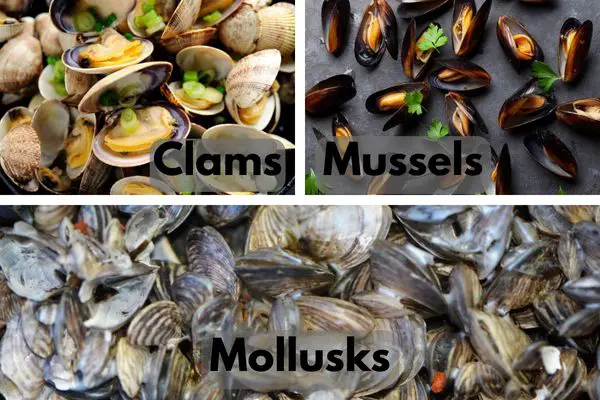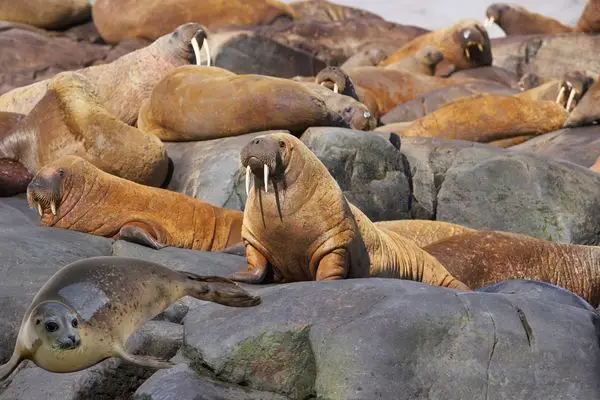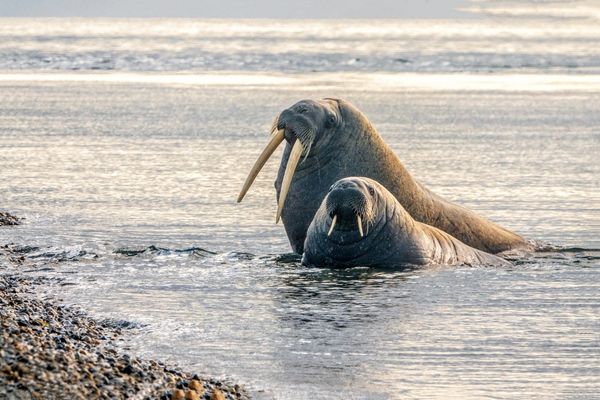Walruses are iconic marine mammals that captivate our imagination with their unique appearance and fascinating behavior. Found in the cold waters of the Arctic, these majestic creatures play a crucial role in the marine ecosystem, and their diet plays an integral part in maintaining a delicate balance within their environment. Understanding the diet of walruses not only helps us appreciate these remarkable animals but also provides insights into the health of our oceans and the challenges they face in a rapidly changing world. In this blog, we will explore what do walruses eat and the intricacies of walrus feeding habits, delving into their primary food sources, occasional prey items, and the various feeding methods they employ to obtain their sustenance. Join us on this fascinating journey to uncover the mysteries of what do walruses eat.
What Do Walruses Eat
Walrus’s Primary Diet: Benthic Invertebrates
Benthic invertebrates, which are organisms living on or within the seafloor sediment, form the cornerstone of a walrus’s diet. Clams, mussels, and other mollusks are particularly important food sources for these massive marine mammals, providing them with the essential nutrients they need to thrive in their frigid habitats.
Walruses primarily feed on bivalve mollusks, such as clams, which are abundant in the Arctic and subarctic regions. These shellfish are an excellent source of protein, carbohydrates, and fats, all of which are crucial components of a walrus’s diet. Furthermore, bivalves contain essential vitamins and minerals that contribute to the overall health and well-being of walruses.
 The preference for benthic invertebrates is largely driven by the walrus’s unique anatomy and feeding techniques. Their tusks are used to anchor themselves to the seafloor or break through the ice, while their highly sensitive whiskers, known as vibrissae, help them locate and identify their prey in the murky depths. Walruses possess a powerful suction capability that allows them to extract the soft tissue of their prey from its shell, leaving the empty shells behind on the ocean floor.
The preference for benthic invertebrates is largely driven by the walrus’s unique anatomy and feeding techniques. Their tusks are used to anchor themselves to the seafloor or break through the ice, while their highly sensitive whiskers, known as vibrissae, help them locate and identify their prey in the murky depths. Walruses possess a powerful suction capability that allows them to extract the soft tissue of their prey from its shell, leaving the empty shells behind on the ocean floor.
By focusing on benthic invertebrates, walruses can target a reliable and abundant food source that is relatively easy to find and consume. This feeding strategy also enables them to conserve energy, as they do not have to chase after a more elusive prey. In turn, the consumption of benthic invertebrates by walruses plays a crucial role in the cycling of nutrients within the Arctic marine ecosystem and helps maintain the delicate balance of life in these cold and unforgiving waters.
Occasional Prey Items: Fish and Other Marine Animals
While benthic invertebrates, such as clams and mussels, make up the bulk of a walrus’s diet, these marine mammals are known to occasionally consume other types of prey when the opportunity arises or when their primary food sources become scarce. Fish, seals, and other marine animals can serve as supplementary food sources for walruses, providing additional nutrients and variety to their diet.
Fish
Fish, including Arctic cod, flatfish, and other bottom-dwelling species, are sometimes consumed by walruses. These fish are rich in protein and fats, offering valuable energy for these large marine mammals. Walruses are not particularly agile or fast swimmers, so they typically target slow-moving or stationary fish that are easier to catch.
Seals
Seals, such as ringed seals and bearded seals, can also be part of a walrus’s diet, though predation on seals is relatively rare. Seal consumption by walruses typically occurs when other food sources are scarce, or when walruses encounter vulnerable, injured, or young seals that are easier to catch. Walruses may use their tusks and powerful jaws to kill and dismember seals, consuming the blubber and flesh for energy and essential nutrients.
Other marine animals
Other marine animals, such as sea birds, crabs, and even smaller marine mammals, may be opportunistically consumed by walruses on rare occasions. However, these prey items are not a significant part of their diet and are usually only consumed in the absence of more preferred food sources.
The occasional consumption of fish, seals, and other marine animals highlights the adaptability of walruses in securing food to meet their nutritional needs. This opportunistic feeding behavior also demonstrates the resourcefulness of these marine mammals, as they face the challenges of living in the rapidly changing Arctic environment.
How do walruses hunt
Walruses have developed specialized foraging techniques to find and consume their preferred prey, benthic invertebrates, in the challenging Arctic environment. These unique feeding methods, which include suction feeding and whisker-assisted searching, enable walruses to locate and capture food effectively in the often dark and murky waters of their habitat.
Whisker-assisted Searching:
Walruses are equipped with highly sensitive whiskers called vibrissae, which can detect the slightest movement or changes in the water around them. These whiskers are essential for locating prey on the ocean floor, particularly in low visibility conditions. As walruses forage, they use their vibrissae to feel the seafloor, identifying the shapes and textures of potential prey items hidden beneath the sediment. Once a potential food source is detected, the walrus will investigate further, often using its snout to uncover the hidden prey.
Suction Feeding:
Walruses have developed an extraordinary suction-feeding technique that allows them to extract the soft tissues of their prey, such as clams and mussels, from their shells with remarkable efficiency. They achieve this by creating a powerful vacuum with their mouths, which they use to suck the soft tissue out of the shell. This method allows them to consume the nutritious parts of their prey while leaving the hard shells behind. Additionally, the suction feeding technique requires less energy than crushing or breaking open shells, which is especially important for an animal that relies on conserving energy in its harsh environment.
Tusk-assisted Foraging:
Although tusks are not primarily used for feeding, they can sometimes aid in the foraging process. Walruses have been known to use their tusks to anchor themselves to the seafloor, allowing them to maintain their position while searching for food with their vibrissae. Additionally, tusks can be employed to break through ice or dislodge rocks, potentially revealing hidden prey beneath.
These specialized feeding methods have enabled walruses to thrive in the challenging Arctic environment, where food resources can be scarce, and conditions are often harsh. By employing these unique foraging techniques, walruses can locate and consume their prey efficiently, ensuring their continued survival in a rapidly changing world.
How much food does a walrus eat
On average, an adult walrus can eat between 3% and 6% of its body weight per day, which equates to roughly 50 to 150 pounds (23 to 68 kg) of food daily. However, this amount can fluctuate based on the availability of food, the walrus’s energy requirements, and the time of year.
During the summer months, when food resources are typically more abundant, walruses may consume larger quantities of food to build up their energy reserves in the form of fat. This stored fat is crucial for their survival during the colder winter months, when food may be more difficult to find and access.



Leave a Reply